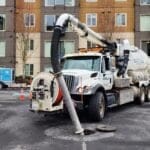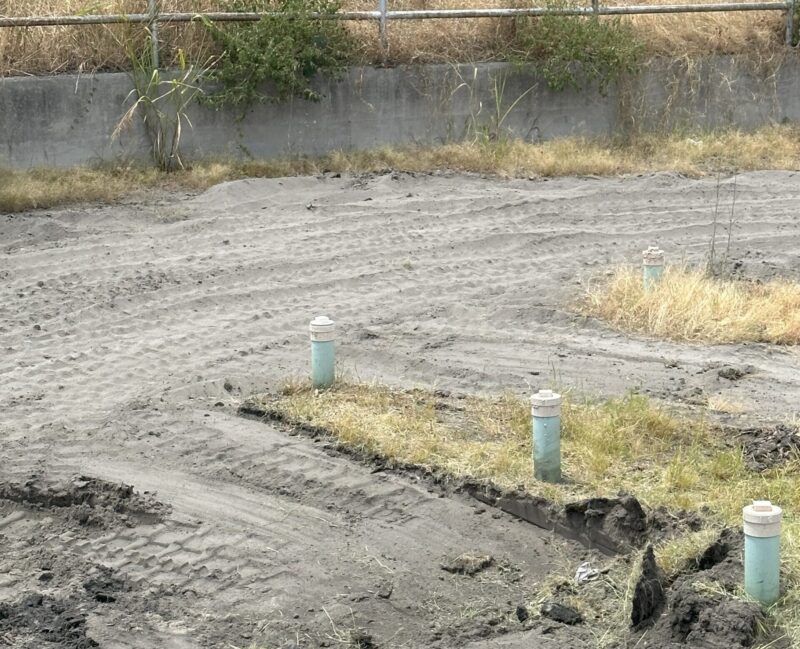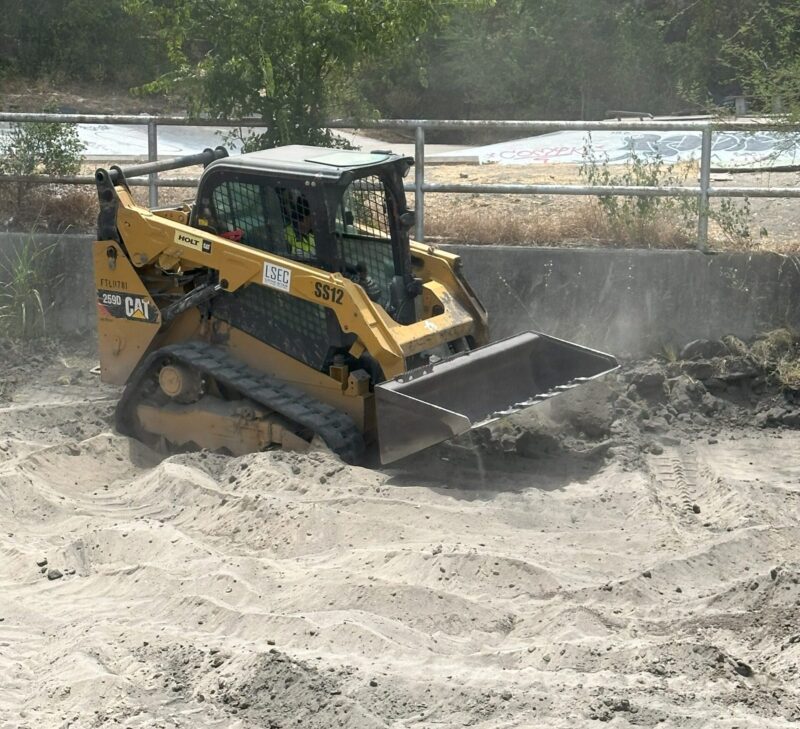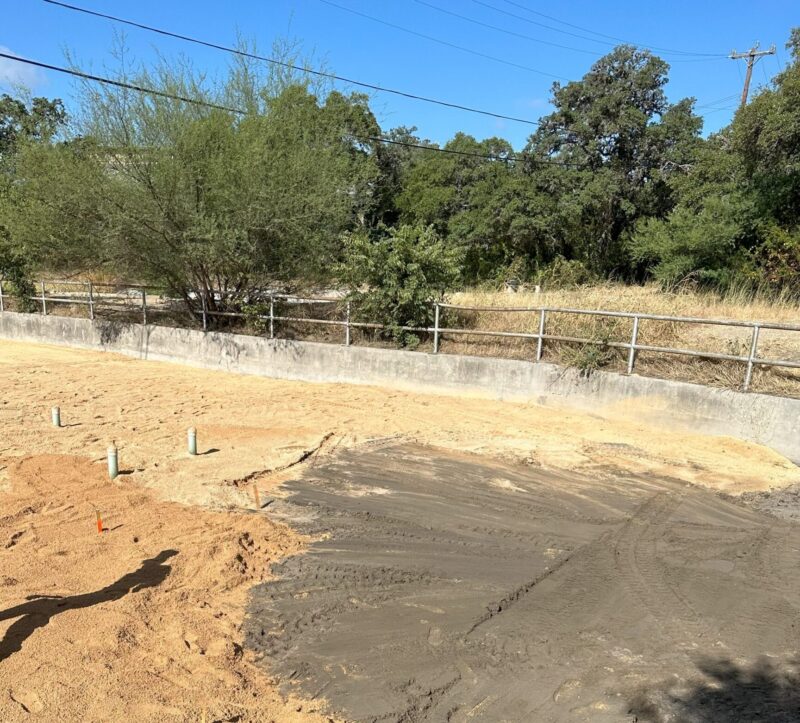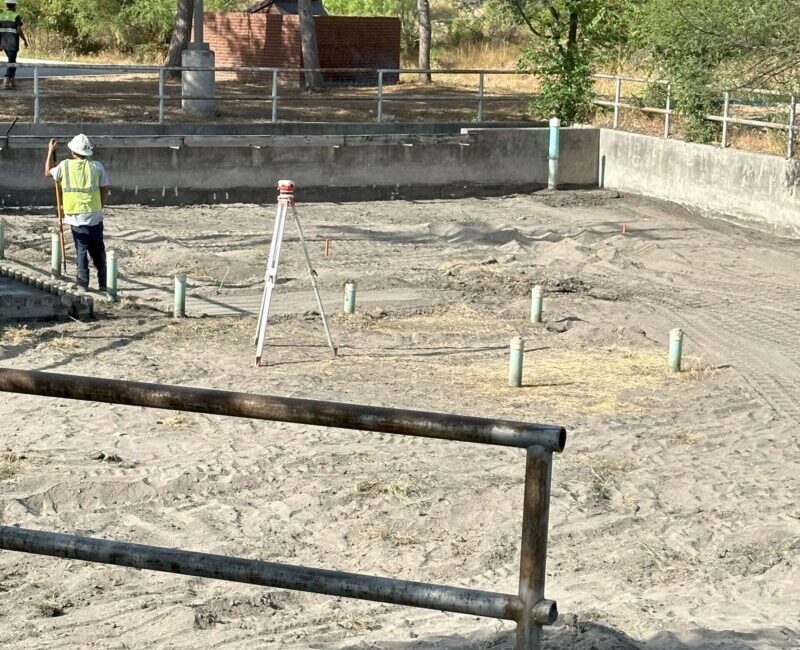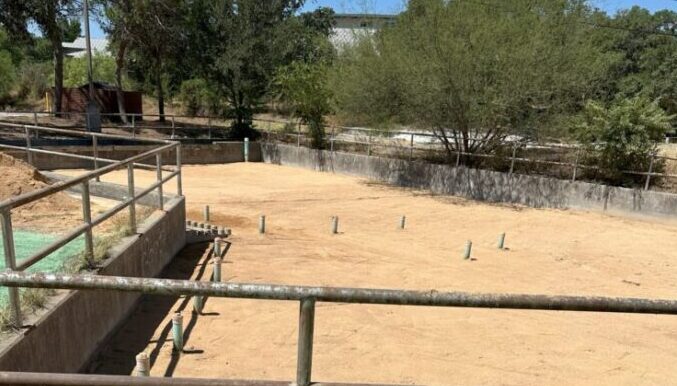San Antonio, Texas Sand Filter Remediation
San Antonio, Tex. |
Commercial |
Stormwater Sand Filter
Overview:
The sand filter basin on this site was not maintained and over time became laden with vegetation and no longer offered water quality benefits.
Problem:
Sand filters are a stormwater control measure (SCM) implemented to improve water quality. Sand filters are typically selected in areas where soils have high infiltration rates. Stormwater runoff filters through layers of sand and gravel, removing suspended solids. Some sand filters, also called infiltration basins, may have a chamber that allows for larger sediment particles to settle before reaching the sand, providing additional water quality benefits. As the water infiltrates through the sand, it can reach an underdrain system and eventually continue downstream. The sand filter on this property did not have a filtration chamber as a part the design of this SCM.
Sand filters can vary greatly as each SCM is designed for site needs. The sand filter basin on this site was no longer functioning as designed after years of use and lack of maintenance. Like any SCM, sand filters are intended to capture sediment during the course of the system’s lifecycle and require routine and non-routine maintenance to extend the life of their performance.
On this site, sediment layers build up on top of the sand over time inhibiting the natural infiltration process. As sediment accumulated, vegetation became established, clogging the system. The grasses and brush on top of this filter created dense root systems that prevented infiltration.
Vegetation can be beneficial in SCMs, when intentionally planted, the vegetation present in this sand filter prevented the asset from performing to the specification it was designed to achieve. Additionally, if the vegetation is maintained, it contributes additional organics that will collect in the sand bed. This sand filter was designed and installed to specifications approved by the city, like all SCMs. Clogged sand filters do not provide the water quality benefits originally approved and therefore must be restored to design specifications.
Sand filters are not designed to hold stormwater aboveground 48 hours after a rain event. The customer identified pooling of water after prolonged periods of dry weather and alerted AQUALIS. The sand filter at this facility has been neglected for years and required rehabilitation.

Before

After
Solution:
Sand filter basins reduce peak runoff rates by collecting stormwater and temporarily retaining it while it is filtered through sand before recharging the groundwater or slowly released into the storm sewer via an underdrain. The primary purpose of sand filters is to filter pollutants and therefore have limitations when managing large volumes of water. During significant rain events, it is possible stormwater will overwhelm and bypass the sand filter.
The underdrain is a common piece of many stormwater control measures. It is commonly made of perforated PVC pipe which collects and conveys stormwater to the connected stormwater sewer. The underdrain on this site was in good condition as it had multiple aboveground access points that allow for regular inspection.
The design plans for this sand filter included eighteen inches of sand inside of a gated basin. Stormwater percolates through the fine sand separating the water from pollutant-laden sediment. After years of accumulation, the top six inches of sand were compromised and in need of replacement and removal to infiltrate at designed rates. As the sand filter is effective in removing nutrients and other pollutants, over time the sand collected and became clogged with sediment, inhibiting the filtration of stormwater. Due to the nature of SCMs collecting pollutants, the material found inside the asset can be considered municipal waste because of the potential contamination of hydrocarbons, benzene and trace metals.
Sand filters are often chosen for stormwater hot spots and industrial areas that are more likely to have toxic pollutants as sand naturally collects and removes them. The media in the sand filter required sampling and testing for potential hazards before disposal. Once the sample was classified as safe, the clogged media could be removed to the appropriate location. In the event the material was deemed toxic, it would require special hazardous material removal and disposal.
Accessibility to this basin was limited as it was surrounded by a steel and concrete fence. AQUALIS first created a temporary ramp and temporarily cut the metal pipe fencing to allow mechanical entry for excavation to begin. The clogged material was excavated in sections with construction equipment for efficiency. Survey equipment was used to accurately measure the six inches of contaminated media to ensure it was removed entirely. The surface was then graded for infill. New sand was then delivered and applied over the basin to the proper height of eighteen inches and graded as specified in the site plans.
SCMs that offer water quality commonly use media, in this case sand, to filter stormwater. When building and restoring water quality SCMs it is important to be aware of the compaction of the media. Using heavy machinery can often compact media to the point that stormwater cannot efficiently infiltrate through. Additionally, the design will call for specifications for media to result in appropriate flow rates and targeted pollutant removal; specifications must be followed when replacing media. Because of this, it is highly important construction and rehabilitation of SCMs is monitored by a stormwater professional. Once the sand filter basin was restored, the area around the basin needed restoration. Native seed and erosion control matting was laid around the basin where equipment had disturbed the vegetation.
Stormwater control measures are intended to collect stormwater pollutants and therefore require regular maintenance and cleaning. Proper maintenance of sand filters includes regular skimming or raking of the top media to reduce accumulation of pollutants and vegetation that will lead to clogging. Even with this regular maintenance, these basins can be expected to clog after 3 years and therefore should be regularly inspected to ensure proper function.
Like most SCMs, sand filters work best when paired with other SCMs in a treatment train. Sites with sand filters are often designed to include vegetated swales or other measures to slow the flow of stormwater before or after entering the sand filter.
If you have questions about sand filters or other water assets schedule a FREE consultation today.
 Kenosha, Wis. Highway KR Regenerative Stormwater ConveyanceThe Root-Pike Watershed Initiative Network Kenosha County, and others worked with AQUALIS to design and implement an innovative solution for stormwater control along Highway KR.
Kenosha, Wis. Highway KR Regenerative Stormwater ConveyanceThe Root-Pike Watershed Initiative Network Kenosha County, and others worked with AQUALIS to design and implement an innovative solution for stormwater control along Highway KR.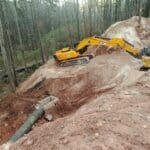 Durham, N.C. Sinkhole Leads to Stormwater System RehabilitationThe tenant on this property noticed a depression that opened to the ground below and notified the property owners.
Durham, N.C. Sinkhole Leads to Stormwater System RehabilitationThe tenant on this property noticed a depression that opened to the ground below and notified the property owners.